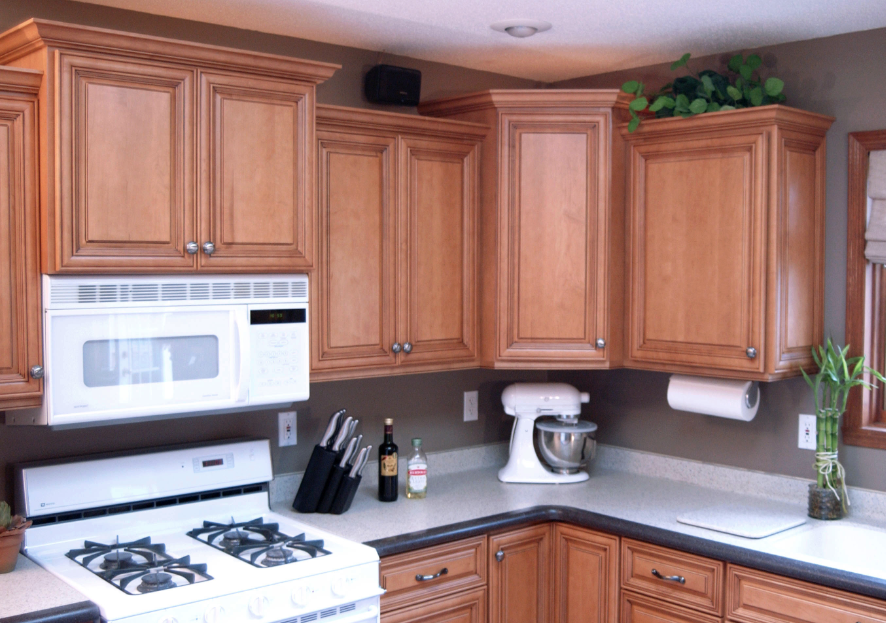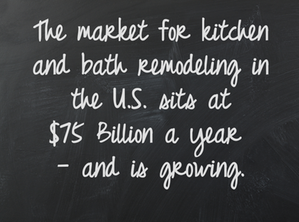As the Housing Market Rebounds, Cabinet Refacing Takes Off
Demographic, housing trends point toward a boom in kitchen remodeling
 The storm clouds from the housing bust are starting to reveal a silver lining for kitchen cabinet refacing companies and other remodelers: A Harvard University study predicts remodeling activity will grow quickly as Baby Boomers sell their homes and downsize. It’s no secret that the housing collapse created hardship in the construction industry. As equity disappeared and credit markets tightened, money for new construction almost completely vanished. Although new construction suffered, remodeling work held tight — dropping from $326 billion in 2007 to $286 billion in 2009 before rebounding back to about $300 billion in 2010, according to Harvard University’s Joint Center for Housing Studies. The research institute singled out specialty contracting firms like Kitchen Solvers for their ability to navigate even the worst of the recession, thanks to streamlined operations, focus and efficiency. Now that the economy is recovering and people are feeling more secure about their paychecks, remodeling is accelerating. The Harvard Institute’s Leading Indicator of Remodeling Activity projects remodeling spending to grow 5.9 percent in 2012 — and it’s not expected to be a short-term trend. The researchers expect home improvement spending to climb 3.5 percent a year through 2015.
The storm clouds from the housing bust are starting to reveal a silver lining for kitchen cabinet refacing companies and other remodelers: A Harvard University study predicts remodeling activity will grow quickly as Baby Boomers sell their homes and downsize. It’s no secret that the housing collapse created hardship in the construction industry. As equity disappeared and credit markets tightened, money for new construction almost completely vanished. Although new construction suffered, remodeling work held tight — dropping from $326 billion in 2007 to $286 billion in 2009 before rebounding back to about $300 billion in 2010, according to Harvard University’s Joint Center for Housing Studies. The research institute singled out specialty contracting firms like Kitchen Solvers for their ability to navigate even the worst of the recession, thanks to streamlined operations, focus and efficiency. Now that the economy is recovering and people are feeling more secure about their paychecks, remodeling is accelerating. The Harvard Institute’s Leading Indicator of Remodeling Activity projects remodeling spending to grow 5.9 percent in 2012 — and it’s not expected to be a short-term trend. The researchers expect home improvement spending to climb 3.5 percent a year through 2015.
 At the same time, the housing downturn certainly had a negative impact on bank accounts and scared the thrift back into many Americans. That newfound thriftiness is an opportunity for Kitchen Solvers, which pioneered solid-wood kitchen cabinet refacing. The process can transform the look of a kitchen without all of the mess and expense of a full remodel. “By offering quality refacing as well as full remodels, and by offering new cabinets at a variety of price points, we can deliver an outstanding kitchen to people, regardless of budget,” Henley said. Kitchen Solvers has remodeled more than 45,000 kitchens since the company was founded in 1982. The company pioneered high-end cabinet refacing and also installs new cabinets and redesigns kitchen layouts.
Back
At the same time, the housing downturn certainly had a negative impact on bank accounts and scared the thrift back into many Americans. That newfound thriftiness is an opportunity for Kitchen Solvers, which pioneered solid-wood kitchen cabinet refacing. The process can transform the look of a kitchen without all of the mess and expense of a full remodel. “By offering quality refacing as well as full remodels, and by offering new cabinets at a variety of price points, we can deliver an outstanding kitchen to people, regardless of budget,” Henley said. Kitchen Solvers has remodeled more than 45,000 kitchens since the company was founded in 1982. The company pioneered high-end cabinet refacing and also installs new cabinets and redesigns kitchen layouts.
Back






